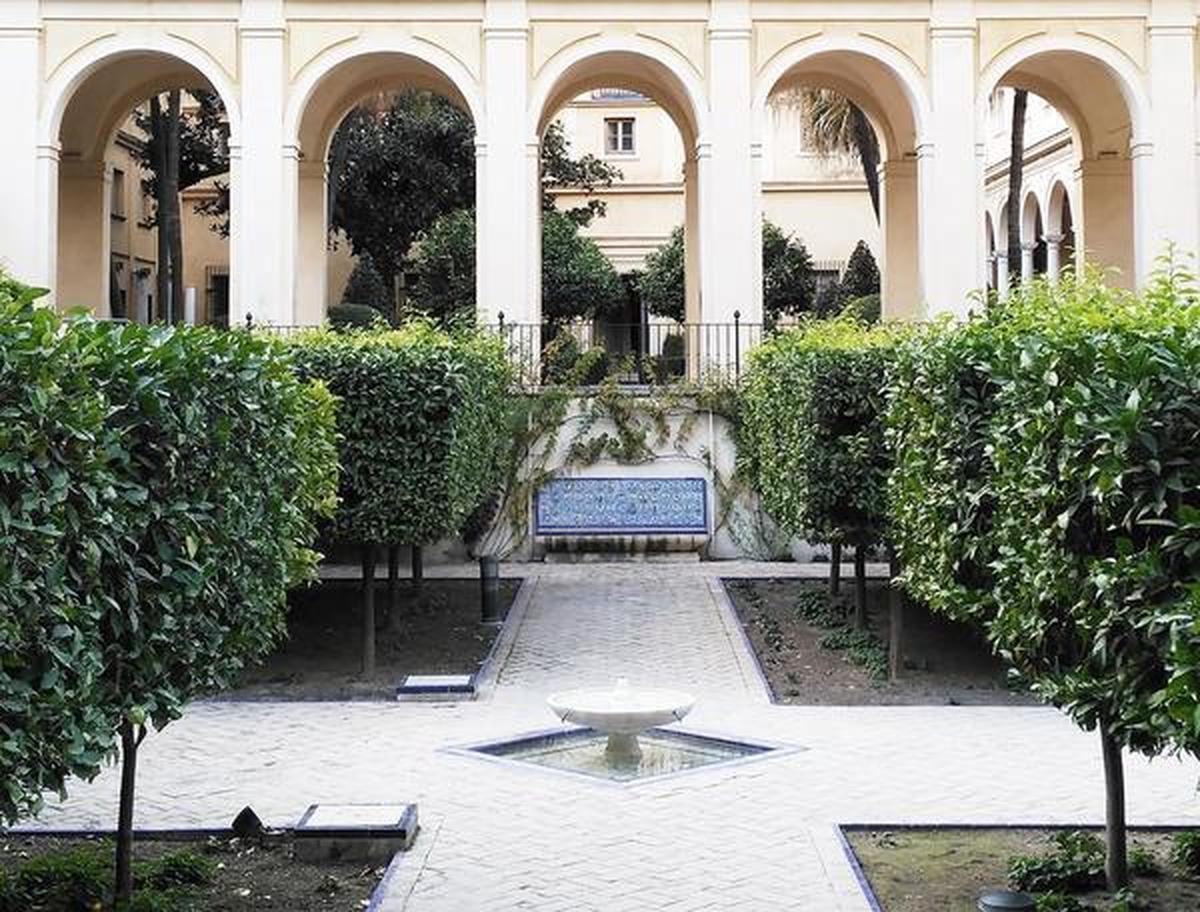Dispuesto sobre el antiguo Corral de los Puercos su adecuación como jardín se debe al programa iniciado por Felipe II para transformar los antiguos corrales y huertas anexos a la fachada sur del palacio en una sucesión de jardines clásicos aprisionados entre sus muros, y que serían descritos por Cosme de Medici como piccoli giardini ridotti. Un sistema de espacios ajardinados organizado alrededor de dos estanques: uno situado arriba (estanque de Mercurio), y otro construido abajo, junto al jardín de las Flores, con objeto de regar los 174 naranjos y limoneros que se mandaron plantar en él. Hoy este jardín se halla formado por cuatro parterres donde aún se cultivan naranjos amargos podados de manera regular, formando una bóveda que protege la existencia de otros cultivos más efímeros. También se distingue por su disposición en los muros perimetrales, cubiertos de naranjos en espaldera.
